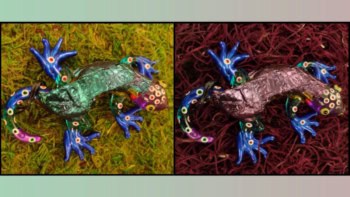
Rogue magnetic fields generated by electrons are thwarting efforts to boost the energies of laser-driven proton beams – according toMotoaki Nakatsutsumi at Osaka University in Japan and an international team of colleagues.
High-energy beams of protons have a number of different of uses ranging from fundamental studies of particle physics to the destruction of tumours in cancer patients. Particle accelerators are the conventional way of generating proton beams, but these tend to very large and very expensive.
Electric sheath field
Another solution is to fire intense laser pulses at a thin solid target, which drives electrons away from their atoms to create an extremely large electric “sheath field”. This field can accelerate nearby protons to form a high-energy beam. Until recently it had been assumed that the energy of the beam could be boosted to ever-higher values by increasing the intensity of the pulses.
Nakatsutsumi and colleagues noticed that an upper limit on proton energy was being approached – and now they have discovered a previously unforeseen magnetization effect that may be putting on the brakes.
“Unfortunately, the electrons that build the sheath also generate a current, which gives rise to a magnetic field”, explains Nakatsutsumi. “This magnetism jeopardizes the whole process by trapping electrons on the target surface, while protons are deflected away from the sheath.” The researchers found that above a laser intensity of around 10²¹ W/cm2, the deflected protons began to lose energy; an effect that was only amplified with further increases in laser intensity.
Undesirable effects
Nakatsutsumi’s team has proposed measures that could reduce the undesirable effects of the magnetic field. These include using extremely short laser pulses and thinner target materials. However, these measures would likely be costly, while not producing much improvement. More research will be needed to minimize the unwanted effects, say the researchers.
The study is described in Nature Communications.


